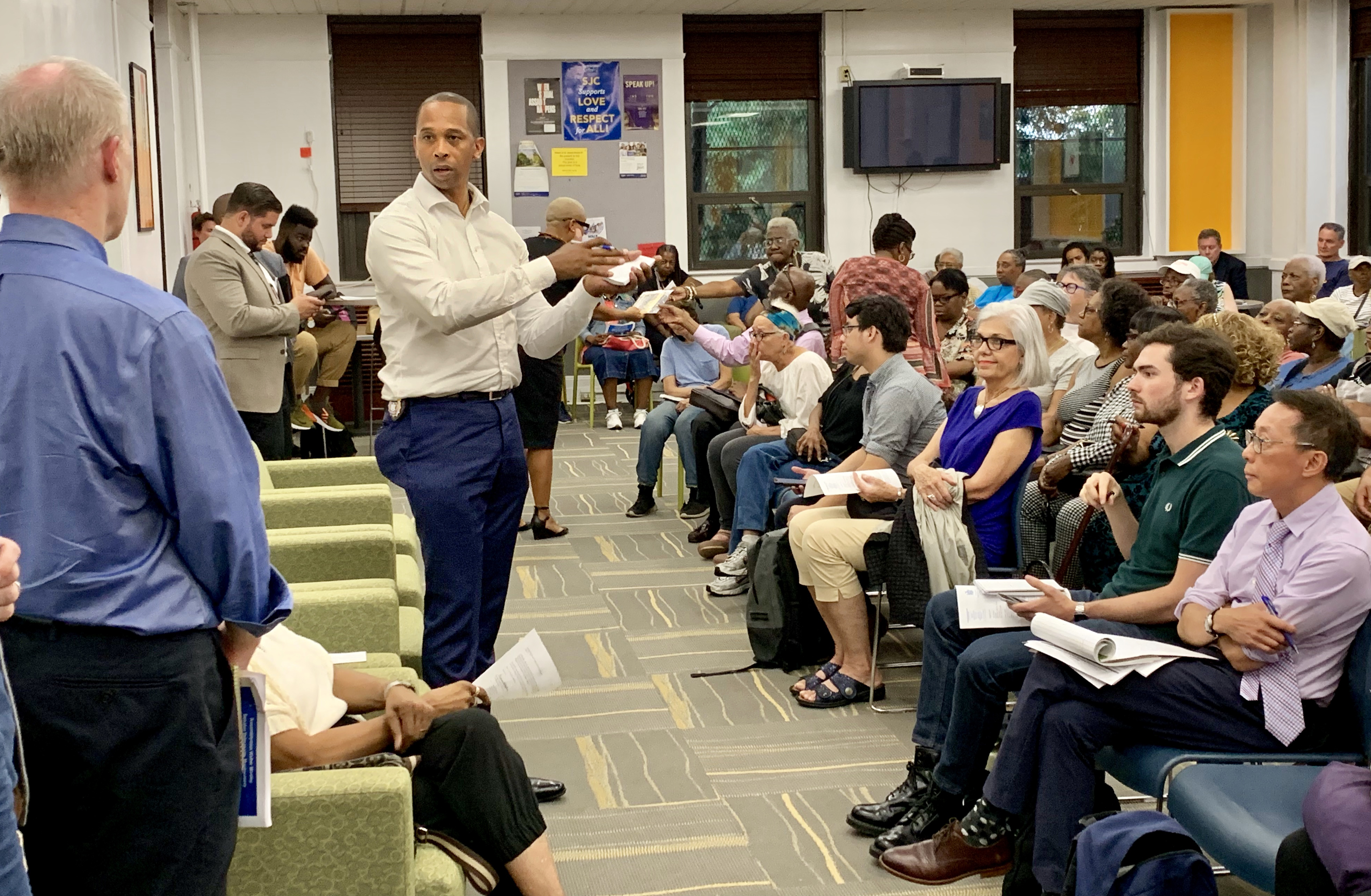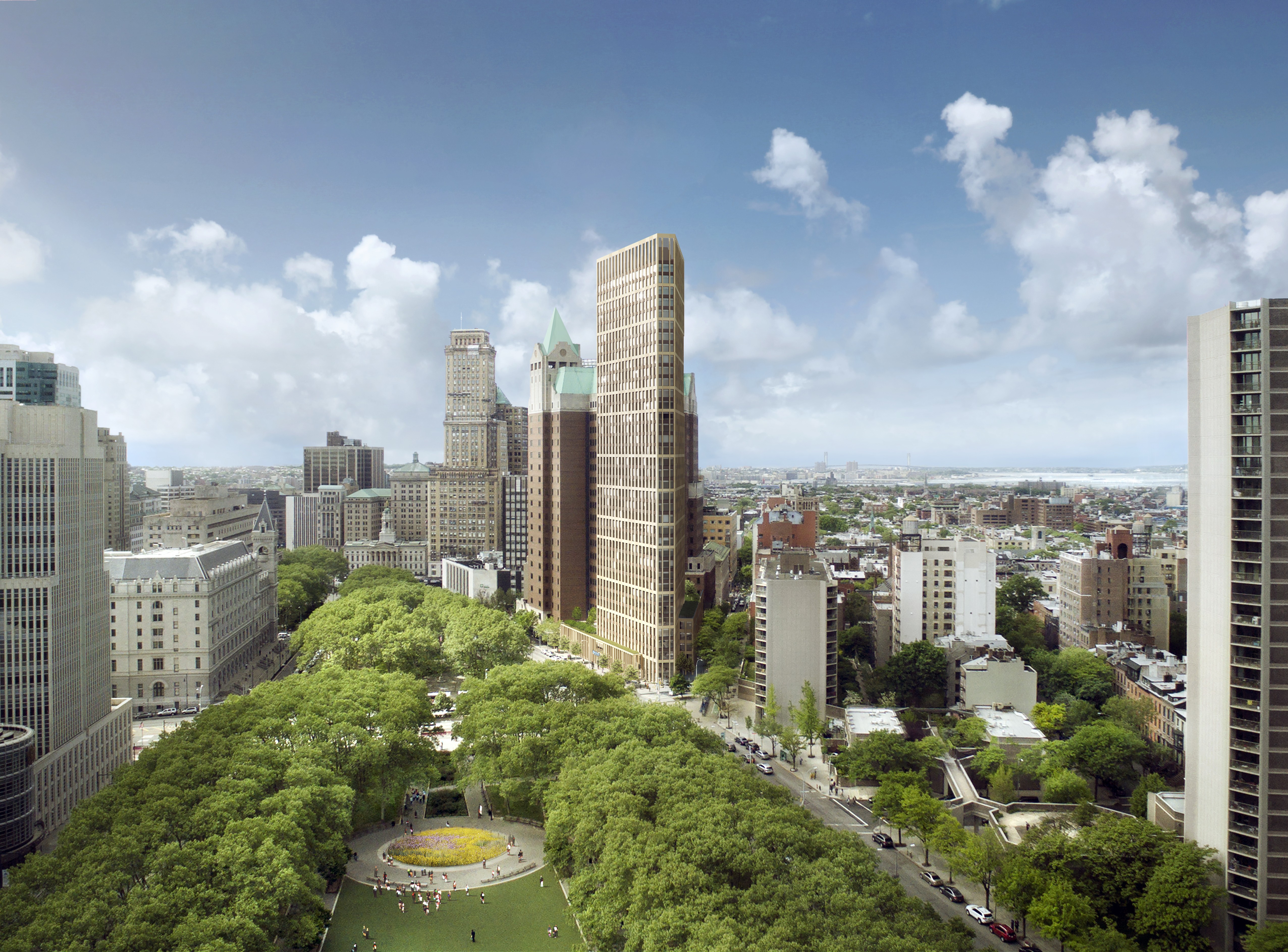Bus riders and electeds unload on MTA officials at Clinton Hill town hall

Assemblymember Walter Mosley questions MTA’s Andrew Inglesby about changes to the B38 and B54 buses in Clinton Hill at Wednesday’s town hall. Eagle photo by Mary Frost
An incensed crowd packed a meeting hall at St. Joseph’s College in Clinton Hill Wednesday night to ask why MTA officials planned to increase waiting times and crowding on two neighborhood bus routes: the B38 and B54.
The town hall was sponsored by Assemblymember Walter Mosley, who was joined by City Council member Laurie Cumbo and State Sen. Velmanette Montgomery.
Andrew Inglesby, MTA’s assistant director of the Office of Strategy and Customer Experience, said that changes to routes were ridership-driven, and that the B38 and B54 alterations were part of a routine, four-times-a-year adjustment.
